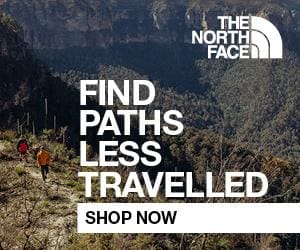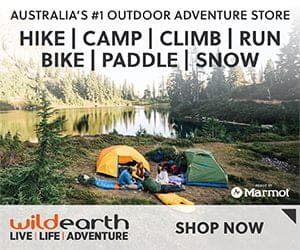Trail Fast Facts
Hakea Trail is a 23km, grade 4 hike in East Fitzgerald National Park, Western Australia. This hike typically takes 7 hours to complete.
Hike Overview
The Hakea Trail is a 23 kilometre spectacular and rugged coastal walk trail in the East Fitzgerald National Park. It starts at the Cave Point Car Park and extends westward to Quoin Head. However, the trail can be accessed at several points along its route. The trail has markers bearing the Royal Hakea.
Cave Point to West Beach Headland. A short beach walk followed by an ascent through heathland to woodland, culminating in a viewpoint with a seat.
West Beach Headland to Hamersley Inlet. The trail leads to Nature's Rockery lookout from where there are 360 degree views of the central peaks and western coastline. It continues to Edward's Point Steps. After descending these steps, the trail continues around to a rocky beach and headland. Once this headland is rounded you then walk along Hamersley Beach. Beware four wheel drive vehicles. Also take care if the tide is high. At the end of the beach there is a pole indicating the Hamesley Inlet Link Trail. This 1.5km trail will take you to the Car Park and Picnic Area at Hamersley Inlet.
Hamersley Inlet to Tamala Karst Lookout. Suited to an easy return trip this section takes in the sheltered woodlands of the link trail, some beach walking and then the creamy cliffs of the Tamala Karst formation. Good views from the lookout.
Tamala Karst Lookout to Whalebone Creek Campground. Melaleuca woodland, inland and cliff top walking make this section varied and spectacular.
Whalebone Creek Campground to Quoin Head. Spectacular coastal and inland views. The trail ends at the Quoin Head four wheel drive track. Note that this vehicle track to Quoin Head from Hamersley Inlet is a four wheel drive track, involving creek crossings and a steep descent to Quoin Head.
Track Grade
Grade 4 (Hard) - Challenging Walks for Experienced Walkers: Grade 4 on the AWTGS signifies challenging walking tracks. Bushwalking experience is recommended for these tracks, which may be long, rough, and very steep. Directional signage may be limited, requiring a good sense of navigation. These walks are suited for experienced walkers who are comfortable with steeper inclines, rougher terrain, and potentially longer distances.
Tips
Start Point: Cave Point Fitzgerald River National Park, 600 km from Perth
End Point: Quoin Head Fitzgerald River National Park
Region: East Fitzgerald National Park, Golden Outback
For more information, a location map and GPS file please visit Trails WA.
Map and GPX file
Help fellow hikers navigate with confidence. Share your GPX or KML file for this trail and help build a more comprehensive resource with precise waypoints and elevation profiles. Your contribution will empower adventurers with details they need for a safer and more enjoyable experience. I meticulously verify every file using official maps and surveys, ensuring the highest level of accuracy and reliability. Submit your file now and become a trailblazer for your fellow outdoor enthusiasts.
Trail Location (trailhead)
Sorry, no records were found. Please adjust your search criteria and try again.
Sorry, unable to load the Maps API.
Getting there
Located within Fitzgerald River National Park, there are a few access points for the Hakea Trail to break it up into sections. The easiest place to access the trail is Cave Point, which can be reached using the paved roads from the eastern entrance of the park.
Photo gallery
If you have any photos from this hike and are happy to share them, please upload your .jpg files here.
Please note: Uploading photos does not transfer ownership of copyright away from you. If requested, you will be credited for any photos you provide and can ask they be deleted at any time.
About the region
Fitzgerald River National Park is one the largest and most botanically significant national parks in Australia. Within the park are found nearly 20 per cent of Western Australia's flora species, many of which occur only within its boundaries. The park features a tantalising variety of landscapes to explore from rolling plains, colourful breakaways, rugged peaks and headlands to stunning bays and inlets. During winter, southern right whales shelter close to shore with their newborn calves.
Similar trails nearby
Explore Safe
While planning your hike, it’s important to check official government sources for updated information, temporary closures and trail access requirements. Before hitting the trail, check local weather and bushfire advice for planned burns and bushfire warnings and let someone know before you go. Plan ahead and hike safely.
Let someone know
Adventure with peace of mind: Fill out your trip intentions form. Before you hit the trail, fill out an online form to privately send important details about your hike to your family or friends. If you don’t return on time, they can easily alert emergency services, preventing worry and ensuring a swift response. Hike with peace of mind and enjoy your outdoor adventure to the fullest. Be smart, be safe: Register your plans here.
Gear to consider
What you carry in your pack will depend on the weather, terrain, time of year, type of adventure, and personal preferences. Having trouble deciding what gear’s right for you? My free planning, food and packing checklists provide an introduction to things your could consider (as well as the Ten Essentials) on your day, overnight and multi-day adventures. Customise your kit according to your personal needs, always considering safety first.
Suggest an edit
Trail changed? New features discovered? Has the route changed? Trail permanently closed? Help fellow hikers by suggesting edits! Click above to update route descriptions, GPX file, trail features (like boardwalks), or access conditions (like parking availability). Help me keep the trails info fresh!
Weather
Acknowledgement of Country
Trail Hiking Australia acknowledges the Traditional Owners of the lands on which we hike and pay respects to their Elders, past and present, and we acknowledge the First Nations people of other communities who may be here today.











